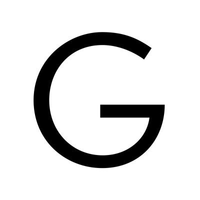Essay | Digital Ethnography within Galleries and Museums
Short Paper on the implications of the digital on Audience development ©Angus Bamford 2020
“A vibrant community of engaged participation is the key to sustaining the relevance of the museum to its audience” (Murphy, O. 2016 p.110).
For Galleries and Museums, the “digital world, technology and remix culture has opened up new avenues to participation” (Murphy, O. 2016 p. 118), leading to a reconsidering of research processes in audience development. The catalytical method being Digital Ethnography. ‘Digital Ethnography will be defined by having a double meaning- firstly referring to the deploying of the ethnographic to understand digital culture and secondly regarding the use of digital methodologies increasingly within ethnographic research. (Hjorth, L et al., 2017 p. 2). Advancements in technology is enabling cheap and extensive data capturing which in turn results in understanding more about the audience and in theory being better able to address their needs.
In hypothesis, as greater digital points of contact are created between the audience their peers and organisations, the institutions ethnographic practices must alter and engage with these connections, with new communication strategies. However, this must come with caution as “Digital ethnography will only be effective in as much as it makes a commitment to understanding, making and theorising change alongside the commitment to deep, thick readings of nuanced practices” (Hjorth, L et al., 2017 p.7).
A SWOT analysis will be used to identify the strengths and weaknesses of Digital Ethnography.
Ethnography is dependent on data, to analysis audience behaviour and interactions. Examples of digital data sources relevant to galleries and museums include; ‘traditional (surveys/polls), online (website visitor analytics, social media profiling, surveys), ticket sales (point of sale, website sales), IoT/ Indoor Location tracking (visitor heatmaps and user flow) among data which may not be as obvious such as weather or competing attraction offerings’(Locatify blog).
Data is most effective the larger the source enabling the synthesis of a greater and more varied data set through ‘networking existing and compound relations available online’ (Murthy, D., 2008 p, 844).
Implicating for Arts Managers is a deeper understanding of audience, beyond mere speculation and human error. This more accurate assumption basis for really ‘knowing’ an audience is outlined by Hjorth et.al (2017, p, 18) who argues that, “The digital form tends to cancel or filter out the ‘noise’ from which all information systems want to extract the ‘signal’ of truth and established meaning”. The Guggenheim Museum states that data capturing has enabled them to 'make smarter curatorial decisions based on visitor movements, enhance informed decisions relating to marketing and most importantly create more personalized and diverse museum-going experiences’ (Norton, S. 2014 Wall Street Journal).
On the contrary for one; data can mislead. Technical errors in data capturing occur and if an arts organisation is heavily dependent on digital data sources it could be capturing and evaluating incorrect and/or non-consented information costing the organisation and the audience alike with infringement on privacy, this especially now within the European Union with potentially heavy penalties for data misuse under the General Data Protection Regulation (EU) 2016/679 (GDPR) legislation.
Much of a Gallery or Museum’s audience may not have a digital footprint. Older generations are especially left out of the catchment of Digital Ethnography as are communities without digital access. A quarter (26%) of people aged 65 to 74 and around three-fifths (61%) of people aged 75+ do not regularly use the internet (Age UK., 2016 p,1).
This results in inaccurate data, favouring audiences with a digital footprint often younger and higher-educated individuals, situated in more economically developed countries.
A further strength of Digital Ethnography is that it is economical, as Hjorth (2017, p, 2) contends;
‘Digital Media technologies makes doing remote ethnography easier’.
This is valuable to arts managers as with minimal funding, large amounts of valuable data can be gathered without expensive manual on site data capturing. However, the fact that it is economical is conflicted, as environment impacts access. The efforts to monopolise data by technology companies hinders the individual and small organisations with limited resources to access and utilize the tools for Digital Ethnography, thus only affordable to those with capital. “Wealthy ‘Old Universities’ can afford the facilities for training and supporting digital ethnographic work. Smaller institutions and ‘New Universities’, reliant on smaller student, rather than research-led, funding are too many times excluded from this emergent medium” (Murthy, D., 2008 p, 848). This monopolisation of data capturing will further divide organisations between the ‘have’s and have not’s’. Development and innovation will be higher and centralised in the organisations with the capital to capture and monopolise critical data, leaving comparatively little resources for the cultural ‘have-not’s’. This trend is particularly negative combined with the rapid movement towards self-employment and micro businesses in the creative and cultural sectors. Arts Managers must therefore be aware of this growing monopolisation and actively serve and maintain an open-source attitude to data capture.
To conclude the potential of Digital Ethnography is endless, “social researchers cannot afford to continue this overall trend of sidestepping digital methods in the future” (Murthy, D., 2008 p, 838). It is a critical tool arts manager must utilize to maintain competitiveness and provide the best service to their audience as possible. Without it one will be out of touch with the exponentially shifts in cultural tastes and practices, Digital ethnography has for many become “the life-blood of an audience-focused organisation” (Taylor, J. MHM). If unchecked, however, Digital Ethnography can have huge artistic, ethical and social ratifications and thus it’s use must be to the benefit of the audience’s experience, and not in a manner of coercing covertly to their detriment. Scepticism is high from the audience perspective, due to the ‘invisibility of Digital Ethnography’ (Murthy, D., 2008 p 840). The Museums Associations research poll in 2016 asked, ‘Is it ethical to track museum visitors’ movements using mobile phone WIFI? More than half (55%) of respondents answered no. exemplifying that Arts Managers need to be sensitive and open regarding Digital Ethnography. This could be done through what Lichterman (2017, p 43) refers to as ‘Interpretive reflexivity’, which tries to show how enthropologists came up with the patterns they call meaningful, or cultural (Lichterman, P., 2017 p, 43). Example of open data capturing with interpretive reflexivity is that of the Dallas Museum of the Arts (DMA) which suggests “By moving from a visitor to a friend’s model of engagement DMA has changed the idea of a single visit towards an ongoing dialogue” (Murphy, O., 2016 p, 111).
This spirit of dialogue is what Arts Managers must strive towards, away from invisible data capturing to an open and transparent conversations between themselves and their audience. This no in vain but embodied into the organisation.
Bibliography
Books
Caliandro, Alessandro (2014), “Ethnography in Digital Spaces: Ethnography of Virtual Worlds, Netnography, and Digital Ethnography,” in Handbook of Business Anthropology, ed. Patricia Sunderland and Rita Denny, Walnut Creek, Left Coast Press, 738–61.
Coleman, S. and E. Normann (2000) New Media and Social Inclusion. London: Hansard Society.
Decker, J. ed., (2015) Technology and digital initiatives: innovative approaches for museums. Rowman & Littlefield.
Hjorth, L., Horst, H., Galloway, A. and Bell, G. eds., (2017) The Routledge companion to digital ethnography. Taylor & Francis.
Murthy, D. (2008) Digital ethnography: An examination of the use of new technologies for social research. Sociology, 42(5), pp.837-855.
Lichterman, P. (2017). Interpretive reflexivity in ethnography. Ethnography, 18(1), pp.35-45.
Journals/Articles
Grincheva, N. (2017)“Museum Ethnography in the Digital Age”. Internet Research Ethics for the Social Age, p.187.
Murphy, O. (2016) “Rethinking participatory practice in a Web 2.0 world.” Museum Participation: New Directions for Audience Collaboration, pp.105-128.
Masciarelli, F. (2016) “Museums in the digital era: technology and innovation.” Dipartimento di Economia e Finanza Cattedra di Entrepreneurship, Innovation, and Technology. Luiss.
Taylor, J. 2019 MHM Lecture Slide (accessed 29/11/19)
Websites
Age UK. The Internet and Older People in the UK – Key Statistics July 2016 (Accessed 1/12/19) https://www.ageuk.org.uk/globalassets/age-uk/documents/reports-and-publications/reports-and-briefings/active-communities/rb_july16_older_people_and_internet_use_stats.pdf
Steven Norton. 2014. Guggenheim Museum CIO Balances Beacons, Beauty. Wall Street Journal. (Accessed 30/11/2019)
https://blogs.wsj.com/cio/2014/09/24/guggenheim-museum-cio-balances-beacons-beauty/
Locatify Blog. 2018. (Accessed 29/11/2019)
https://locatify.com/blog/museum-trends-how-your-museum-can-collect-and-use-data/
Image : https://northbankdesign.co.uk/peoplewatching-art-galleries/

